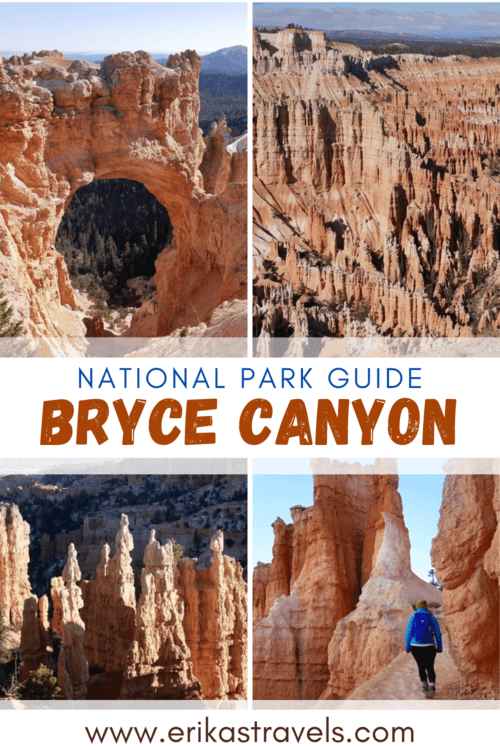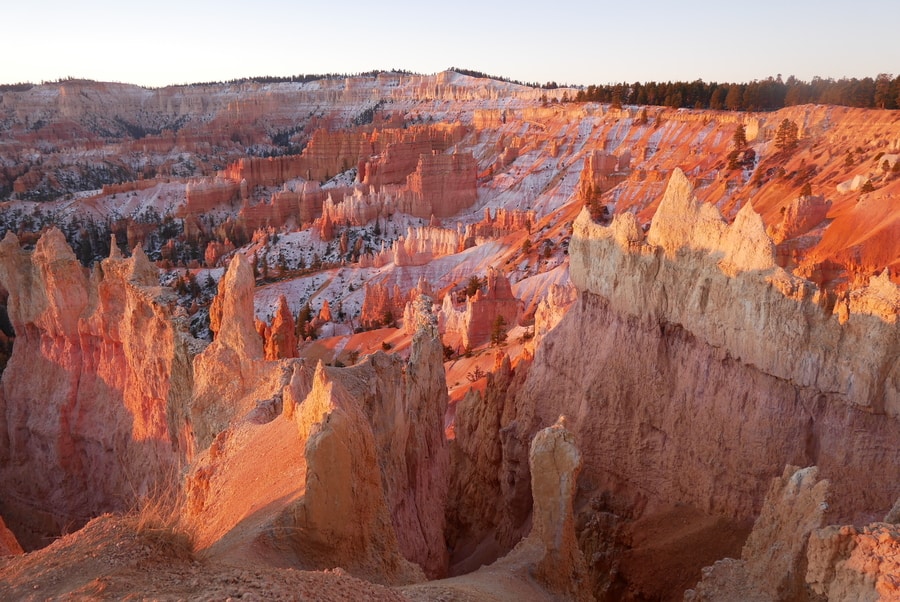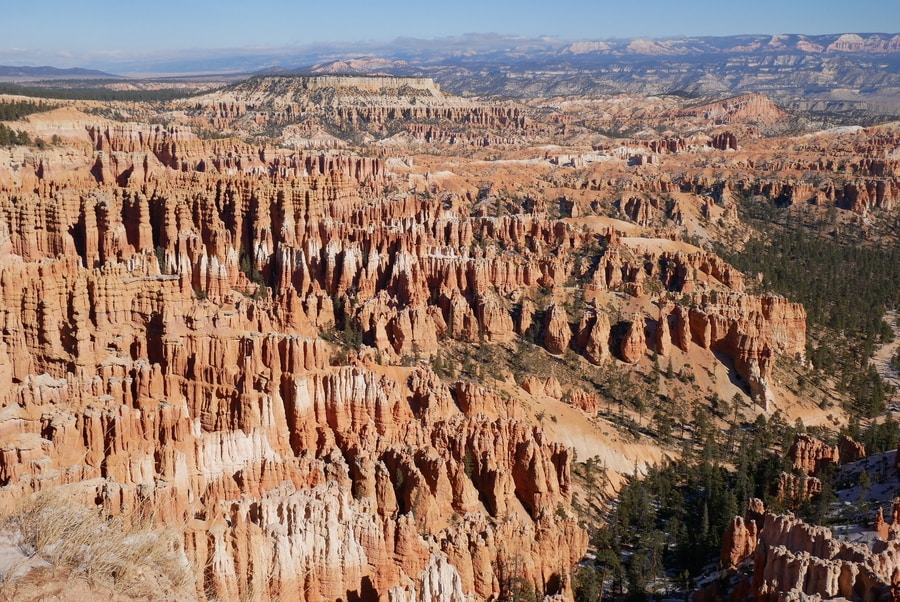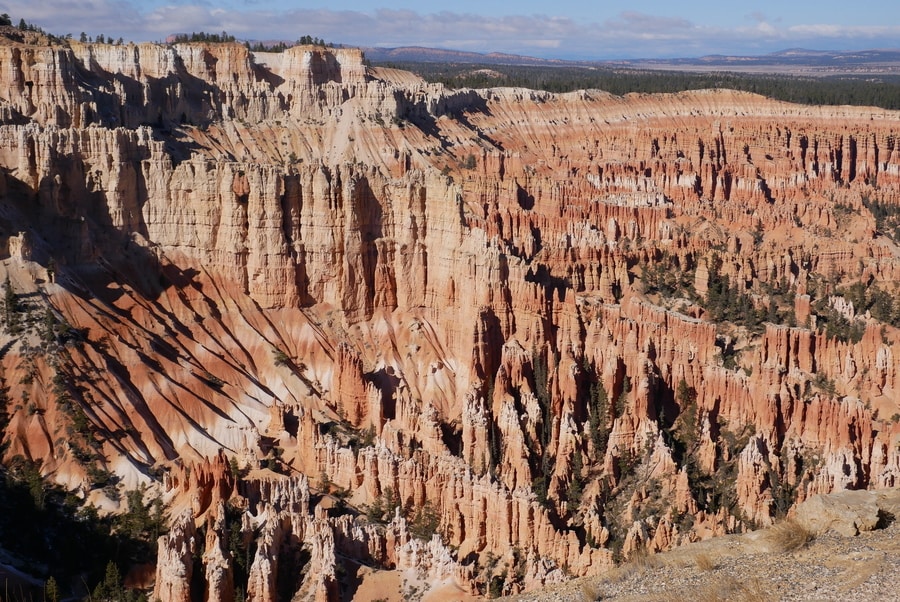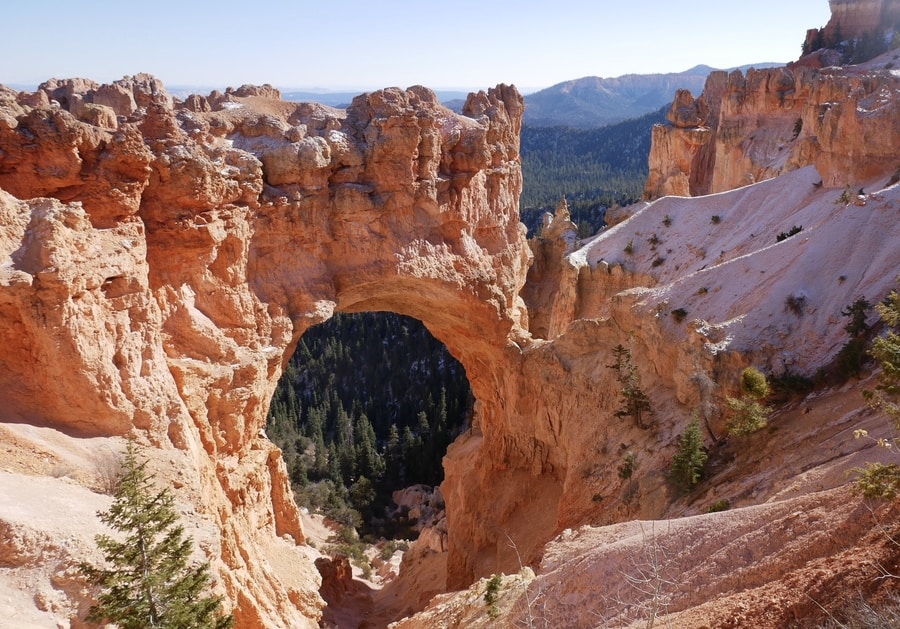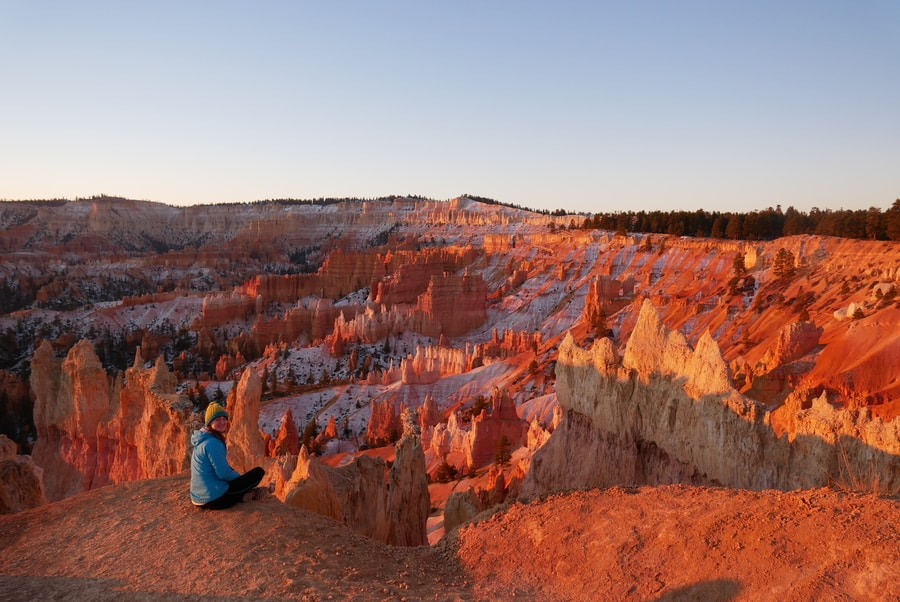
Things to Do in Bryce Canyon National Park
Bryce Canyon National Park is an otherworldly fairyland of elegant beauty and shocking colors. Renowned for its rock formations that pierce the sky like rust-colored stalagmites, the canyon’s ethereal desertscape is nothing short of breathtaking.
Bryce’s spire-clad environment is utterly unique and unforgettable. A sculpture garden of pastel daggers, the national park is a photographer’s dream and one of the most iconic landscapes in the American Southwest.
I reckon it is impossible not to stand in awe of the park’s sandcastle-like hoodoos, delicate fins, and cavernous amphitheaters.
THINGS TO DO AND SEE IN BRYCE NATIONAL PARK
Bryce Canyon is a long and narrow park that hugs the eastern edge of Utah’s Paunsaugunt Plateau.
To the west, heavily forested tablelands soar more than 9,000 feet in altitude. To the east, the plateau sinks 2,000 feet to the Paria Valley. Streams and snowmelt have sliced the plateau’s sandstone, forming horseshoe-shaped bowls. The largest and most striking is the Amphitheater—the scenic heart of Bryce Canyon National Park.

Beyond the Amphitheater, a ribbon of road follows the plateau’s ridgeline to Yovimpa Point. Along the way, it affords a birds-eye vantage point over Utah’s Grand Staircase.
MUST-SEE VIEWPOINTS IN BRYCE CANYON
Bryce Canyon’s must-see viewpoints line the eastern side of a 20 mile scenic drive. Near the park entrance, iconic vistas showcase sweeping aerial snapshots of the Bryce Amphitheater. Toward the end of the road, lesser-known panoramic points offer intimate experiences of the canyon’s more remote attractions.
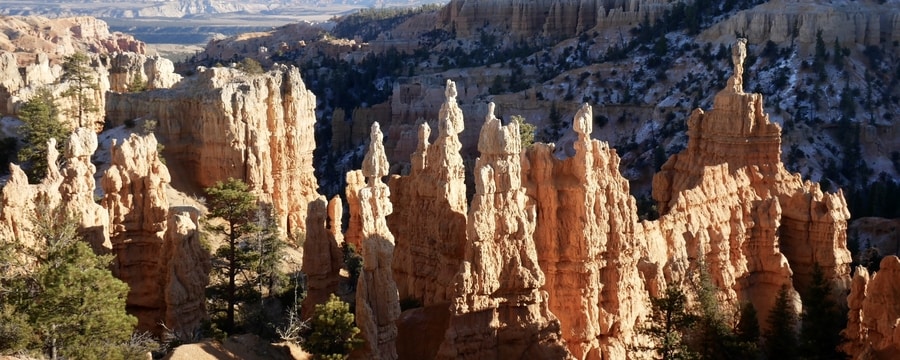
While Bryce Canyon is an Instagram sensation that packs a lot of punch, the park is quite small. Its diminutive size and easy-to-access viewpoints make it a popular day trip destination.
SUNRISE POINT
Sunrise Point, near the park’s visitor center, boasts views of well-known formations such as the Silent City and Thor’s Hammer. The colors at Sunrise Point are among the most vivid in the park.
As its name suggests, Sunrise Point is worth visiting in the early morning hours—when a warm glow illuminates the canyon. Like fire, the orange light quickly spreads over the deepest recesses of the amphitheater and ignites the area in a vibrant blaze.
Sunrise Point is one of Bryce Canyon’s main viewpoints. From its large parking area, trails follow the canyon rim toward Sunset Point, Inspiration Point, and Bryce Point.
For travelers looking to stretch their legs and descend below the plateau’s rim, the Navajo Loop Trail is a definite must.
SUNSET POINT
Sunset Point lies adjacent to Sunrise Point, in Bryce Canyon’s main amphitheater. The popular viewpoint affords vistas of Bryce Canyon’s most famous and breathtaking hoodoos.
Below the rim of Sunset Point, the Silent City’s rock sculptures rise from the canyon floor. Amidst these sculptures, a maze of hoodoos and fins lie packed in tight formation.
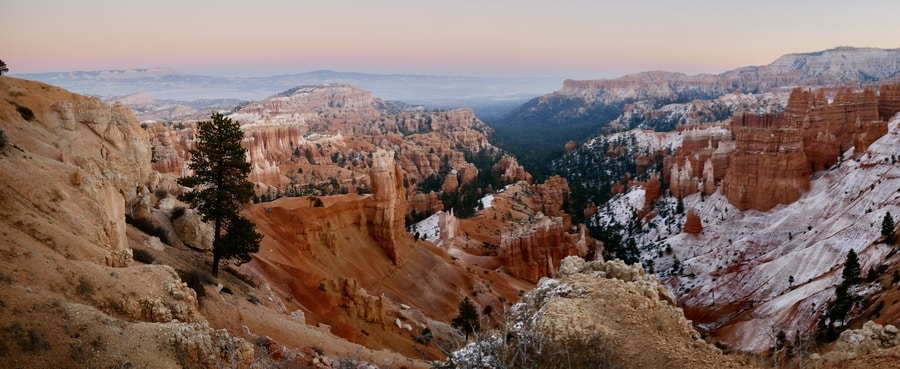
Following an unforgettable hike through the Queen’s Garden, Dan and I watched the sun dip below Sunset Point. Despite our brisk pace—or perhaps because we spent too much time snapping photos—we didn’t quite get the chance to see the area aglow.
Still, the views over Sunset Point were epic. I can only imagine how beautiful they must be when the sun drenches them in orangey light.
INSPIRATION POINT
Inspiration Point consists of three levels that provide spectacular perspectives of the Bryce Canyon Amphitheater. From its lofty vantage points, visitors look toward the Silent City’s hoodoo forest.
The photogenic viewpoint is one of the top things to see in Bryce. While no trails lead down into the canyon from the steep cliffs of Inspiration Point, the Rim Trail extends north to Sunset Point and south to Bryce Point.
Inspiration Point’s name leaves little to the imagination. From its lookout, a tapestry of inverted icicles sprawl outward like a miniature city.
If the view doesn’t inspire you, then I don’t know what will.
BRYCE POINT AND PARIA VIEW
Visually, Bryce Point shares many similarities with Inspiration Point. It boasts some of the most scenic vistas of the Bryce Amphitheater and is among the park’s most renowned lookouts.
Bryce Point is famous for its extraordinary sunrises. From here, the tops of hoodoos catch fire from the rays of the rising sun.
If the parking area at Sunrise Point becomes overrun with cars at dawn, Bryce Point provides a fantastic alternative.
Conversely, nearby Praia View is a noteworthy place to visit at sunset. While most of the canyon’s hoodoos face away from the setting sun, Paria View is an exception.
SWAMP CANYON
Swamp Canyon—bounded by tan-colored hoodoos on both sides—appears relatively small and sheltered from its road-side overlook. While modest in comparison to the Bryce Amphitheater’s renowned lookouts, the viewpoint offers a more personal look at the area’s geology and vegetation.
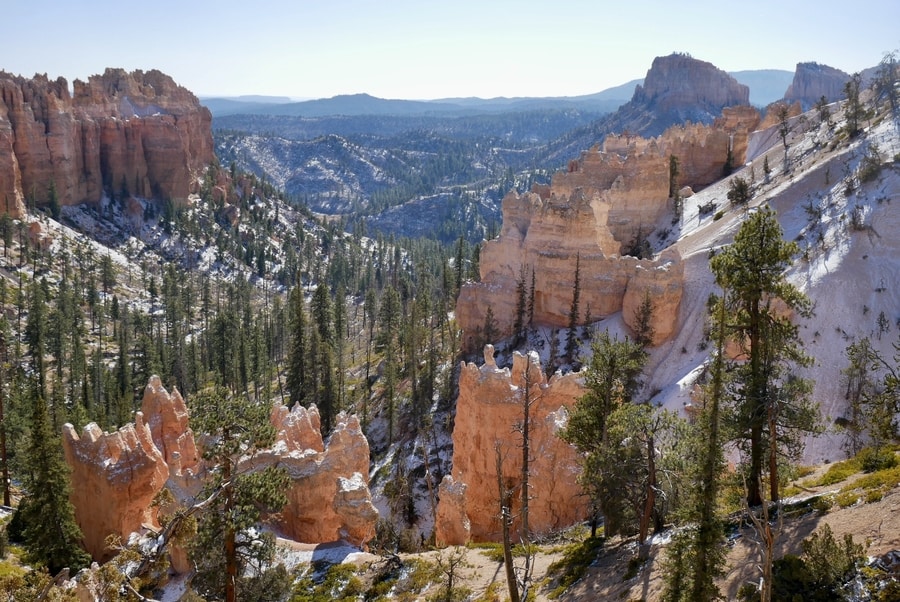
Swamp Canyon’s name appears to be a misnomer. Yet below the rim, two tiny creeks provide enough water to sustain lush vegetation and animal life.
The 4.5 mile Swamp Canyon Loop passes through a forested area that is popular among bird-watchers.
FARVIEW POINT AND PIRACY POINT
Like Swamp Canyon, the Farview and Piracy viewpoints showcase the area’s carpet of ponderosa pines. From this overlook, views unfold over the vast staircase of plateaus that extends all the way to the north rim of the Grand Canyon.
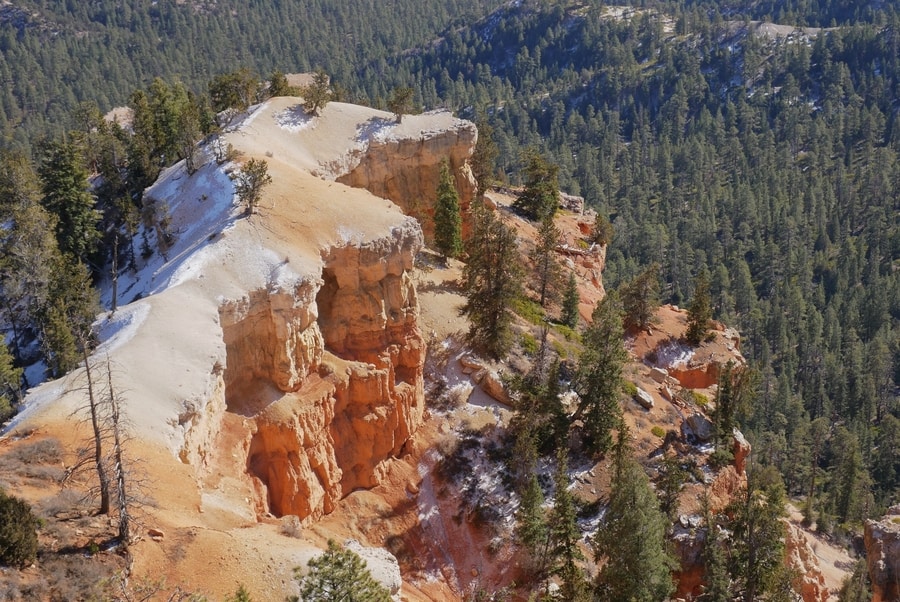
A short 0.3 mile trail leads from Farview Point to Piracy Point—a view named for the two enormous hoodoos that resemble ships in battle.
Piracy Point is perfect for those seeking a quieter spot to contemplate the scenery.
NATURAL BRIDGE
Erosion is responsible for Bryce Canyon’s unique rock formations. At the Natural Bridge lookout, ice and gravity sculpted a deep red arch that rivals some of the most spectacular formations in Arches National Park.
The ruby-red arch poses a stark contrast to the verdant Ponderosa forest that acts as its backdrop. In wintertime, a dusting of white makes the area’s colors even more dramatic.
Photographing the Natural Bridge is one of the top things to do in Bryce National Park. The arch isn’t the only one of its kind in the canyon, but it is certainly among its most renowned.
AGUA, PONDEROSA AND BLACK BIRCH CANYONS
Most visitors to Bryce spend their time in and around the Amphitheater. And for good reason. The area is extraordinarily scenic.
But for visitors looking to appreciate Bryce’s landforms in solitude, some of the lesser-known spots can be equally enchanting. Beyond the Natural Bridge, three consecutive smaller viewpoints are worthy of quick photo stops.
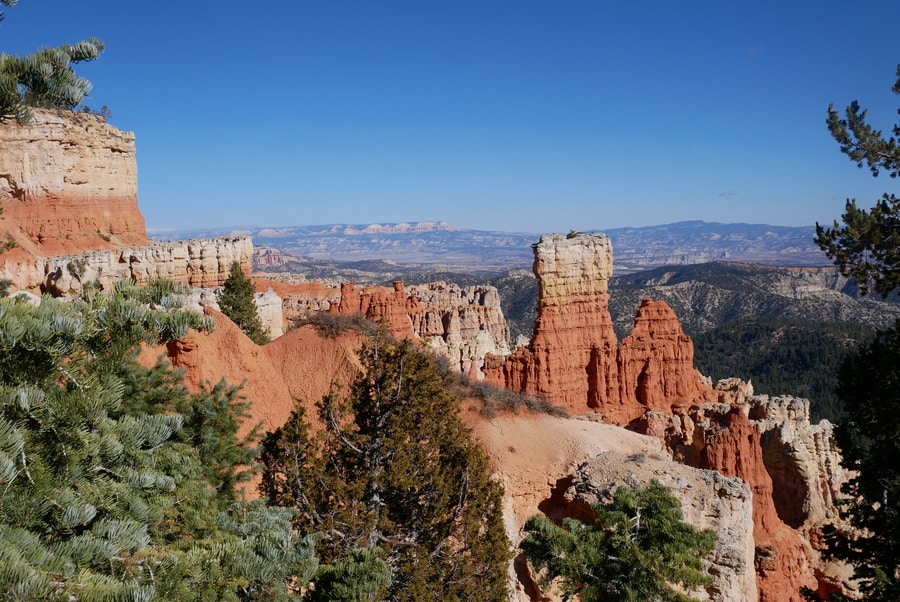
At the Agua, Ponderosa and Black Birch Canyons, small parking areas give access to sweeping views of red rock hoodoos and rich evergreen forest.
Beyond, views of the Grand Staircase-Escalante reveal a barren expanse of uncharted desert.
RAINBOW POINT AND YOVIMPA POINT
The adjacent Rainbow and Yovimpa viewpoints overlook Bryce Canyon’s southern end. They offer fantastic panoramas over the area’s colorful rock formations.
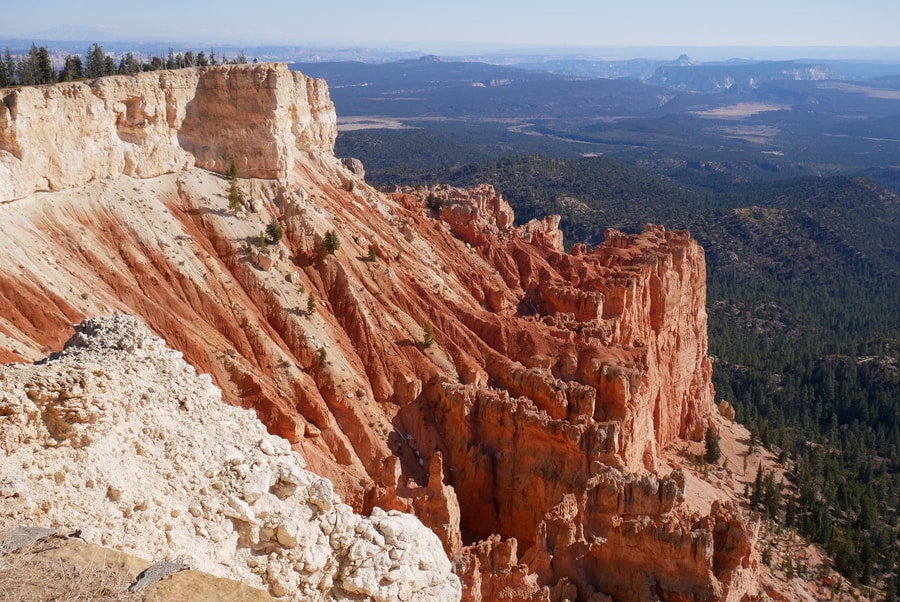
Visiting Rainbow and Yovimpa Points provides visitors with a geologic and geographic orientation. From the area’s 9,100 ft vantage point, panoramic views look out over Utah’s multi-tiered Grand Staircase.
HIKES IN BRYCE CANYON NATIONAL PARK
Unlike Zion and Canyonlands, Bryce is compact and easily accessible. For the most part, it is entirely possible to get a sense for the top things to do in Bryce without ever setting foot on a hiking trail. Bryce Canyon’s overlooks are extraordinary and leave little to the imagination.
That being said, hiking below the canyon rim is a must for travelers who have more than half a day to explore. A network of trails descends 1000 ft into a maze of fragrant junipers and red rock spires. It weaves through the hoodoo-studded landscape and allows for up-close views of the iconic pinnacles.
THE RIM TRAIL
Bryce’s 11 mile Rim Trail connects Fairyland Point with Bryce Point. The beloved pathway offers panoramic views of the amphitheater’s kaleidoscopic topography. It is level in elevation and accessible from several viewpoints along the canyon’s rim.
NAVAJO LOOP/QUEEN’S GARDEN
Hiking the 2.9 mile Navajo Loop and Queen’s Garden combination trail is one of the most popular things to do in Bryce Canyon.
The spectacular loop—accessible from both Sunrise Point and Sunset Point—features photo-worthy views at every bend.
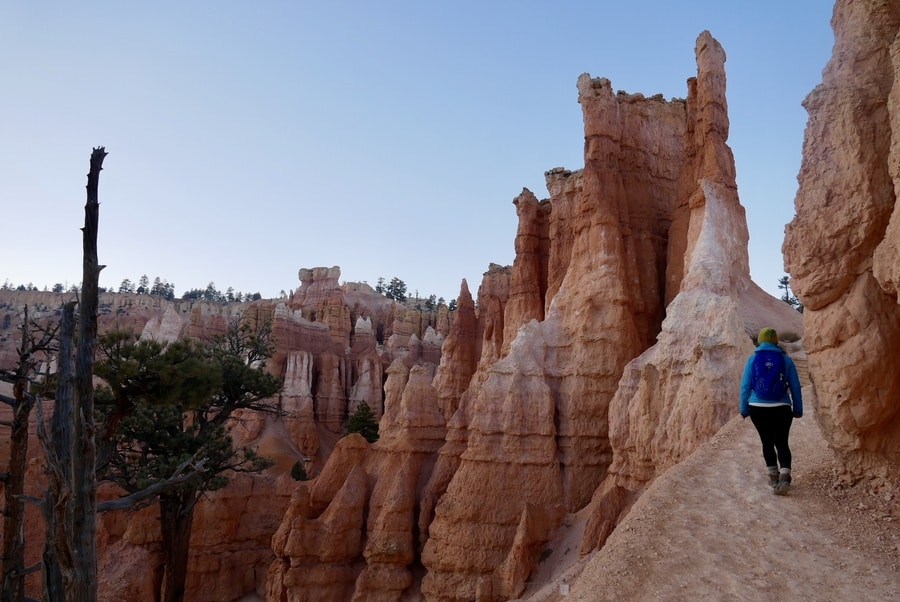
As I wove through the staggering rock formations, I found it almost impossible to put down my camera. Each rock spire seemed to tell a compelling story. Each angle appeared more convincing than the last.
Had we not been racing the sun in order to make it back to the trailhead before dark, I imagine my memory card would have run out of space.
PEEK-A-BOO LOOP TRAIL
The 5.1 mile Peek-a-Boo Loop Trail begins at Bryce Point and descends to the valley floor. As one of the top hiking trails in Bryce, it is said to be comparable to Navajo Loop and the Fairyland Trail.
Peek-a-Boo Loop can be icy and treacherous in winter.
FAIRYLAND TRAIL
Following our drive to the canyon’s lesser-known viewpoints, Dan and I made our way to Fairyland Point. The scenic overlook marks the beginning of the Fairyland Loop Trail.
While Dan and I didn’t have time to complete the 7.8 mile hike, we took a few moments to admire the area’s hoodoo-clad landscape.
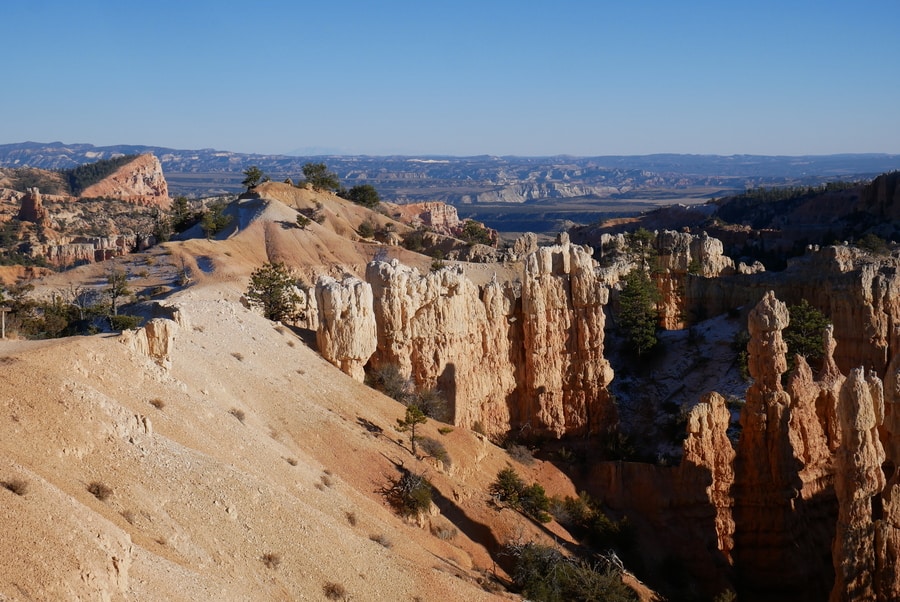
Fairyland Loop is often regarded as one of the best hikes in Utah. It would have been top of our itinerary had we had two days in Bryce.
BRISTLECONE TRAIL
Bristlecone trail is a two mile path that lies at the southernmost end of Bryce Canyon National Park. The path showcases views of Rainbow and Yovimpa Point and passes by ancient bristlecone pines that date back 1,500 years.
MOSSY CAVE
The 0.4 mile long trail to Mossy Cave lies along Highway 12, outside the park’s main entrance gate.
We skipped the hike during our visit to Bryce, since I’d read online that the waterfall was dry and that there were no icicles hanging above the mouth of the cave.
Under ideal conditions though, the trail certainly appears to be worthwhile.
WHEN TO VISIT BRYCE CANYON
Summer is peak tourist season in Bryce, but the canyon’s scenery is accessible and enchanting year-round.
Thanks to its high elevation, Bryce Canyon is generally cooler than southern Utah’s other natural wonders. In summer months, the area is a welcome respite from Utah’s scorching desert temperatures.
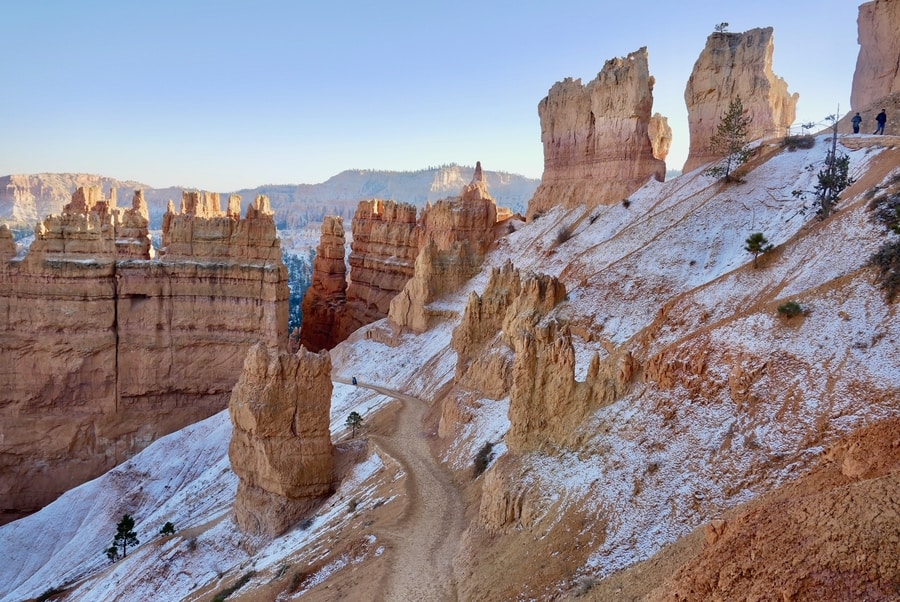
In winter, a layer of snow decorates its orange pinnacles and adds dimension to the striking landscape. If you can handle freezing weather, it is a wonderful time to experience the area’s enchanting scenery in relative solitude.
WHERE TO STAY NEAR BRYCE
The Lodge at Bryce Canyon is the only accommodation option within the confines of the national park. The historic hotel offers guest suites, motel rooms, and cabins that are within walking distance of the Bryce Amphitheater’s most striking viewpoints.
Nearby, two campsites provide additional options for in-park lodging (provided you bring your own tent or RV, of course).
Near the park’s entrance, the small town of Bryce has a handful of places to stay—including Ruby’s Inn, the Best Western Plus Grand Hotel, and the Luxe Bryce Canyon Home.
Additional accommodation options are available east of the park, in the town of Tropic.
BEYOND BRYCE
Bryce Canyon is one of the top places to visit in Utah and a highlight of traveling through the American West. The iconic Utah park is hyperbolic in its beauty and extraordinary in its delicacy.
But Bryce doesn’t stand alone. A handful of noteworthy Utah state parks lie nearby—including Kodachrome Basin and the Coral Pink Sand Dunes. If you have time, it is worth exploring the state parks, venturing into the remote reaches of Grand Staircase-Escalante, and driving the scenic Highway 12 to Capitol Reef.
****
Bryce National Park’s famed colorful spires and rock arches are among the planet’s most exquisite geological sculptures.
For millions of years, water has shaped this rugged landscape through a cycle of freezing and melting and freezing and melting. The photogenic fairyland is a direct result of winter’s harsh conditions.
Bryce Canyon is one of the the world’s best examples of geology in action. The Paunsaugunt Plateau’s temperature extremes have carved a landscape that is continually in flux—creating an ever-changing canvas of nature’s finest artwork.
________________________________
Did You Enjoy this Post on the Top Things to Do in Bryce? Pin It!
